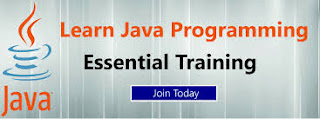What is Training Need Assessment?
“Training
Needs Assessment” (TNA) is the method of determining if a training need exists
and, if it does, what training is required to fill the gap. TNA seeks to
identify accurately the levels of the present situation in the target surveys,
interview, observation, secondary data and/or workshop. The gap between the
present status and desired status may indicate problems that in turn can be
translated into a training need.
|
Training Needs =(Desired
Capability)–(Current Capability of the
Participants)
|
Why
do we need training ?
Because training is a means to ensure that
government officials have the knowledge and right skills to be able to do their
work effectively and competently. Training may be needed when there is a gap
between the desired performance, and the current performance, and the reason
for that gap is lack of skill or knowledge. Training may only be able to
resolve part of the problem. Thus we need to analyze the problem and find out
whether training will be able to resolve it. If training is necessary, we also
need to define the objective of the training and how it will help the staff
member(s) become more effective. This process is called a Training Needs
Assessment shown above or Training Needs Analysis. It is important to note
that, despite many reasons to conduct training shown above, training may
sometimes not be the only solution to a problem. There are many other means
that impact on someone’s ability to do their work, as pointed out in the “Report on Training Needs
Assessment” by PILAC. The following are other examples.
1) Lack
of skills or knowledge, or experience .
2)
Not having the right equipment or
resource
3)
Not being encouraged by managers
and colleagues to do the right thing.
4)
Bad workplace morale or conditions
.
5)
There are no standards or
expectations that are set and communicated .
Why do we need a
Training Needs Assessment?
First,
identify dissatisfaction with the current situation and desire for change as
similarities among the requests. Each request implies that a gap or discrepancy
exists between what is and what could be or should be. A learning or
performance gap between the current and desired condition is called a need.
Five Steps: The processes of Training Needs Assessment can be
divided into five steps:
i)
Identify
problem and needs;
ii)
Determine design of needs assessment;
iii)
Collect
data;
iv)
Analyze data; and
v)
Provide
feedback.
Tips for Developing
Interview Questions
1) Place
easy to answer open ended questions at
the beginning.This will help the interviewee to begin talking and can help to
develop trust and rapport.
2) Place important questions near the beginning
of the interview.
3) Ensure that each question matches a stated
objective.
4) Sequence questions from general to specific.
5) Sequence
and cluster question in a logical order.
6) Ensure that questions are clear, concise, and
jargon free.
7) Be sure that questions are appropriate for
the skill and experience levels of the target audience.
8) Provide
adequate space between questions to record information.
9) PilotZtest interview questions.
10) Make appropriate revisions.
The Best Traninig Provider In The
Department Of Engineering & Science
We are providing following
training programme in the department of
Civil, Mechanical, EEE, and IT industry.
We are providing following courses
like
1)
Auto CAD
2)
Solid Works
3)
Industrial Automation
5)
Control Pannel
6)
Pro-e
7)
Soft skills




Comments
Post a Comment